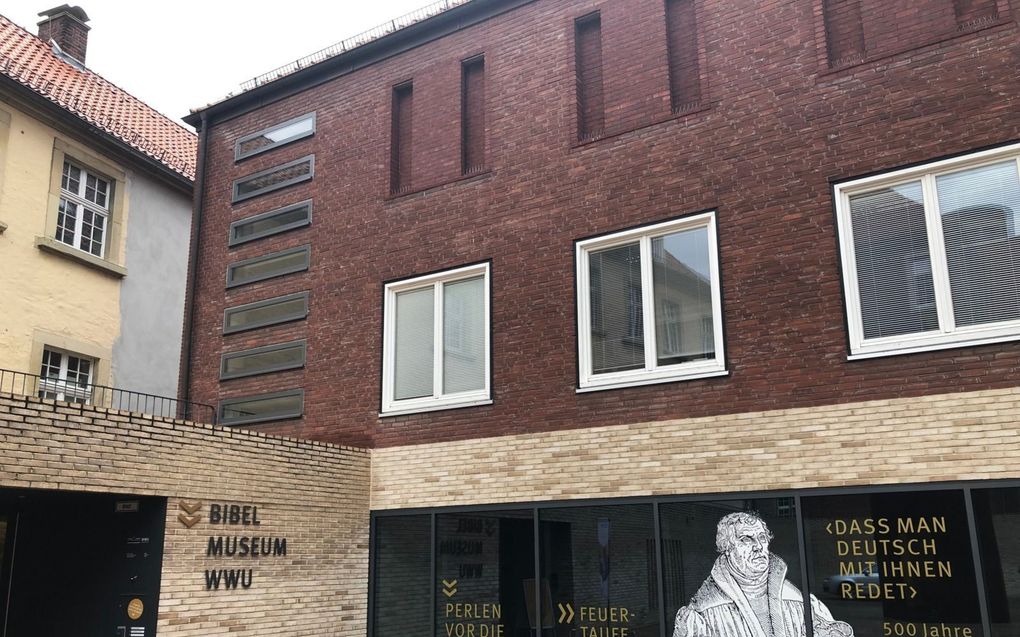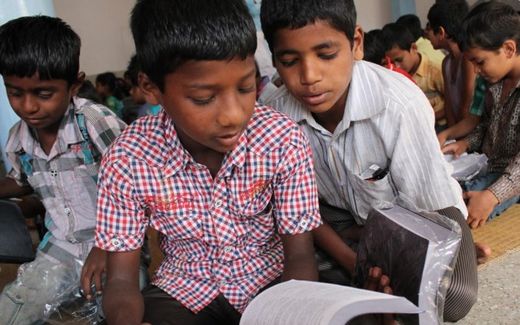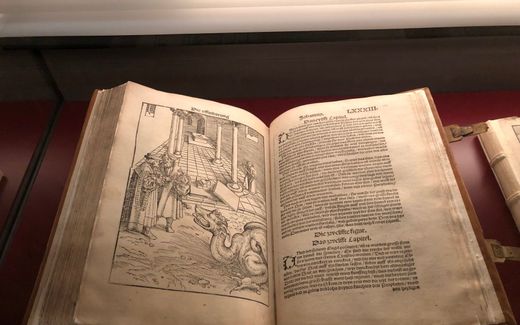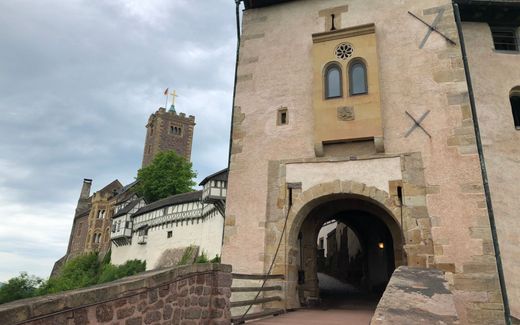Münster Bible Museum tells story of Luther Bible: from plagiarism to Playmobil
07-07-2022
Central Europe
Geerten Moerkerken, RD

This summer the Bibelmuseum Münster presents an exhibition on Martin Luther's translation of the Bible. Photo RD
Central Europe
Catholic 'counterbibles' were meant to be a response to Martin Luther's popular translation of the Bible. But these sometimes leaned so heavily on Luther's text that the reformer accused them of plagiarism. This summer, the Bible Museum in Münster tells the story of Luther's life's work.
It takes some time to find the entrance to the 'Bibelmuseum Münster', hidden in a courtyard of the university complex in the centre of the German city. The Bible Museum is located in the same building as the famous Institut für Neutestamentliche Textforschung. For decades, the text-critical edition of the Greek New Testament has been produced here. Numerous centuries-old Bible manuscripts have been housed here.
Now, the face of reformer Martin Luther adorns the windows of the building. On the occasion of 500 years of the Luther Bible - the German translation of the Bible that Luther made together with others - the Bible Museum is holding the exhibition "Das man Deutsch mit ihnen redet". The title is taken from a quotation from Luther, from his letter about Bible translations. If you translate it well, Luther said, "people will notice that you speak German with them."
Revolution
The exhibition was opened by Markus Lewe, the mayor of Münster, on Tuesday, May 3th. According to the mayor, Luther's translation of the Bible symbolises "a gigantic revolution, which started with the Reformation."

In his speech, Lewe pointed to the rapid increase in fake news. "We live in a time where people are very flexible with the truth. That creates alienation among them. How can we continually translate our own speech in such a context so that it becomes a conversation with the other person? I wish visitors of this exhibition inspiration so that the spirit of the translation may also occupy us.
The mayor of Eisenach, Katje Wolf, also spoke via a video link. An exhibition on the Luther Bible opened at the Wartburg Castle in Eisenach in the same week.
Display cases
The door appeared to be closed on a weekday afternoon in May, a few weeks after the opening, but pressing the bell changed everything. A few floors up, the Luther exhibition is in one room with glass display cases along the walls. Apart from the light shining into the cabinets, it is pitch black. And quiet: this afternoon, three other visitors are visiting the exhibition.
Each guest is given a tablet containing information about each of the approximately 120 exhibited objects. In German, an English translation is still being worked on. It means a lot of reading and little interaction. A flyer shows that the museum has more to offer children and young people at other times. During the summer holidays, for example, there are several guided tours and workshops such as "printing like Gutenberg" or "writing on papyrus".
For those who don't shy away from reading, the exhibition offers a lot of fascinating information on Luther's Bible-based on six themes.
Manuscripts
The first theme deals with the vernacular languages and their scholarly translations and includes some of the earliest Bible manuscripts. The critical study of these has increased over the past two centuries. "If Luther translated today, he would not be able to avoid the scholarly critical text of the New Testament," the explanatory notes state.

The second topic is the printing press, a "media revolution that preceded the Reformation." Without that revolution, Luther's Bible would never have become so widespread. The reformer spoke highly of the invention: "The high benefits of printing cannot be expressed in words. The Holy Scriptures are revealed and spread through it in all tongues and languages."
Luther was not the first to translate the Bible into German. On the contrary, the third part of the exhibition is entirely devoted to "Pre-Lutheran Bible translations." There are no fewer than eighteen of these, the oldest dating from the ninth century and the youngest - the Halberstädter Bibel - from the same year as Luther's translation of the New Testament: 1522. These Bibles relied heavily on the Latin Vulgate and, because of the literal translations, were often difficult for the Germans to understand, according to the explanatory notes.
Alternatives
The fourth part of the exhibition tells the story of Luther's life, from 1517 until his death, with all kinds of objects such as a travel spoon of the reformer. The fifth theme shows that 'his' Bible was not welcomed by everyone: plagiarism. Catholic theologians prohibited its distribution and came up with alternative translations, 'counter-bibles', such as the one written by Hieronymus Emser (1478-1527).

However, Emser's Bible was so similar to Luther's that the reformer already mentioned plagiarism in his epistle on translation. Eighteenth-century research has shown that large parts of the counterbibles were indeed copied verbatim from Luther. Unintentionally, they contributed to the further spread of Luther's work.
The sixth theme deals with "Luther today" and shows that Luther's legacy continues. It shows the further development of his Bible translation and Luther's influence more widely in culture: for example, in numerous board games about the Reformation. Of course, the best-selling Playmobil doll ever is not missing: Luther with the Bible in his hand. The most recent exhibition piece is "Theses 2.0" from 2021, from an activist group that wants to combat "abuses" in the church and advocates, among other things, opening all offices to women. Last year, the theses were attached to around 1,000 German church doors.
This article was translated by CNE.news and previously published in Dutch daily Reformatorisch Dagblad on July 6th, 2022.
Related Articles





